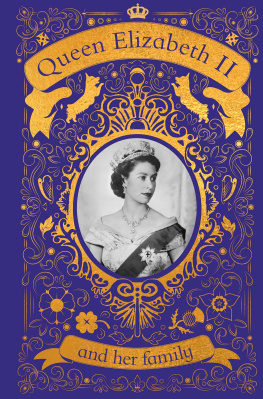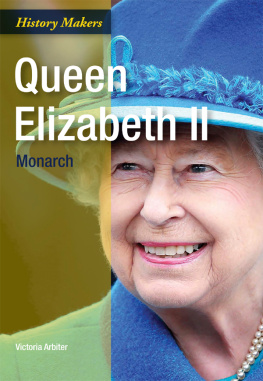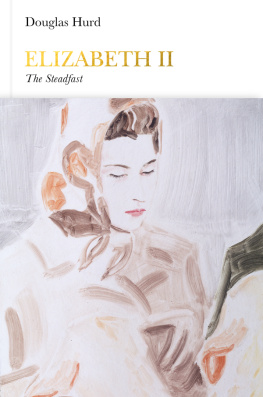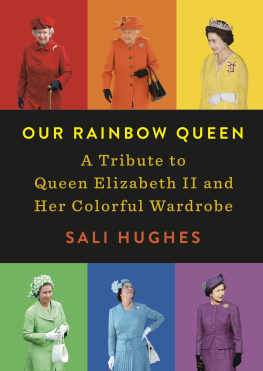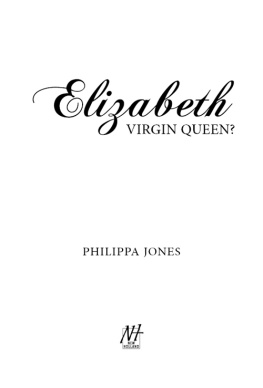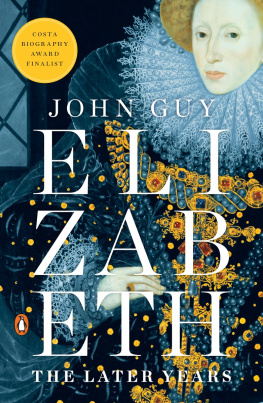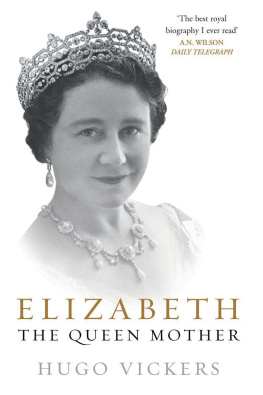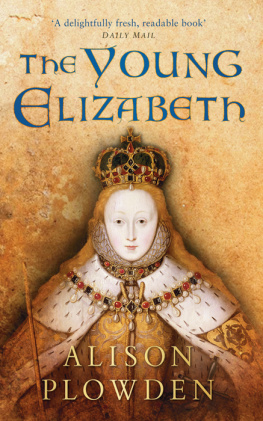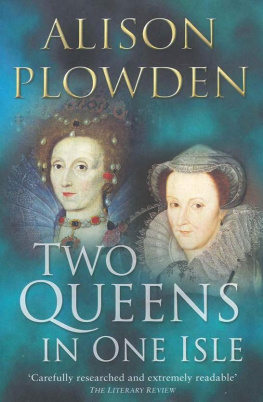Acknowledgements
This book would not have been possible without inadvertent as well as intentional contributions from people over a lifetime that is now in its seventh decade. I freely admit I never had any intention of writing it, and would not have done so had it not been for my English publishers, who convinced me that it would be a shame to waste knowledge that I had acquired, often serendipitously, in the course of a varied life. They took the view that, since I had been fortunate enough to know or be related to people who knew Queen Elizabeth The Queen Mother well, and since that knowledge would disappear unless it was recorded, it would be historically irresponsible not to put pen to paper.
I wish to emphasise that many of the insights I acquired came from people who had no idea that their comments would ever see the light of day. Had they known that their views would ultimately form the basis of a biography, they might well have tailored their remarks somewhat. The fact that they did not is all to the good, for Queen Elizabeth The Queen Mother is a major historical figure, and it is about time the extraordinary woman behind the mythological faade is revealed in her glorious and sometimes conflicting complexity.
The people to whom I owe debts are Margaret, Duchess of Argyll; the 3rd Lord Glenconner; the Revd. Philip Hart; Lady Jean Campbell; the 6th Viscount Hardinge of Lahore; Michael Thornton; Lady Lindsay of Dowhill; Percy Savage; Lord Charteris of Amisfield; the Hon. John Pringle; Homan Potterton; Charles du Cane; Ned Ryan; the Hon. Shaun Plunket; the Duchess of Leeds, Dowager Lady Hobart; Lady Diana Cooper; Dr Etienne Dunnett; Donald Douglas; Emma, Lady Temple; Anna, Lady Brocklebank; the Marquesa de Casa Maury; Clare, Duchess of Sutherland; Rene Silvin; Parker Ladd; Lady Sarah Spencer-Churchill; Burnet Pavitt; Princess Olga of Russia; Frederick Fox; Richard Adeney; Michael Ziadie; Julian (Lord) Fellowes (of West Stafford) and E. Charles Hanna.
I would also like to thank Buckingham Palace for the photograph they provided for inclusion in the photographic section of the book; the celebrated portrait painter Basia Kaczmarowska Hamilton for allowing us to use her excellent portrait of Queen Elizabeth The Queen Mother on the back cover; the gifted photographer David Chambers for the author photograph as well as for photographing Sir Gerald Kellys sketch of King George VIs State Portrait; my English publishers Dynasty Press and especially Roger Day, Dean Rockett, Darren Strudwick, and Nigel Mitchell; my American publishers St Martins Press and especially Hope Dellon, Sally Richardson, John Murphy and Stephen Lee; Diana Colbert and Ailsa Macalister of Colbert Macalister, who provided invaluable PR advice, and last but not least my two sons Dima and Misha, who were wonderfully patient as only the children of authors observing deadlines can be.
The following photographs appear by kind permission of the copyright holders:
Glamis Castle Vittoriano Rastelli/Corbis.
Elizabeth and her younger brother Underwood and Underwood/Corbis.
St. Pauls Walden Bury Country Life/A.E.Henson.
The Duke and Duchess of York Hulton-Deutsch Collection/Corbis.
Elizabeths Wedding Hulton-Deutsch Collection/Corbis.
Marion Crawford and the little princesses Bettman/Corbis.
The Duke and Duchess of Kent Bettman/Corbis.
Thelma Furness and Gloria Vanderbilt Bettman/Corbis.
Official Coronation Bettman/Corbis.
The Windsors Hulton-Deutsch Collection/Corbis.
Norman Hartnell Hulton-Deutsch Collection/Corbis.
The Glamourous Elizabeth Hulton-Deutsch Collection/Corbis.
King George VI and the Roosevelts Hulton-Deutsch Collection/Corbis.
King George VI and Elizabeth enjoy tea at Royal Lodge Hulton-Deutsch Collection/Corbis.
Elizabeth at the Castle of Mey Bettman/Corbis.
Elizabeth with the young Prince Charles Lisa Sheridan/Studio Lisa/Getty Images.
Princess Annes Christening Hulton-Deutsch Collection/Corbis.
The vanity of Elizabeth Norman Parkinson/Sygma/Corbis.
The Snowdons dancing AFP/Getty Images.
Elizabeth and Lady Diana Spencer Hulton-Deutsch Collection/Corbis.
Elizabeth and the Princes Russell Boyce/Reuters/Corbis.
Introduction
At 3.15 pm on Holy Saturday, 30th March, 2002, Queen Elizabeth The Queen Mother slipped peacefully away at the grand old age of 101. With her at Royal Lodge in Windsor Great Park were her daughter, Queen Elizabeth II, her grandson David, Viscount Linley, her granddaughter Lady Sarah Chatto, her niece Margaret, the Honourable Mrs. Rhodes, and the Chaplain of St. Georges Chapel, Canon John Ovendon, who had held her hand as she lapsed into unconsciousness ten minutes before her death, praying aloud and uttering the Highland lament:
I am going now into the sleep,
Be it that I in health shall awake;
If death be to me a deathly sleep,
Be it that in thine own arms keep,
Oh God of Grace, to new life I wake;
Oh be it in thy dear arms keep,
Oh God of Grace that I shall awake.
As so often had occurred during her life, the occasion was almost perfectly staged. Her death was peaceful and painless. It had been expected, not least by the old lady herself, who had spent the previous week ringing up old and trusted friends and retainers, saying goodbye and distributing tokens of her regard.
In death as in life, however, perfection is elusive, and so it proved this Saturday afternoon between the two most holy days in the Christian calendar: Good Friday and Easter Sunday. Her favourite grandchild Charles, Prince of Wales, had been informed too late that she was fading faster than anticipated. He was therefore unable to return from Klosters in Switzerland, where he had taken his sons for their annual skiing trip.
And yet, while everyone who knew Charles and his grandmother felt that he would have dearly loved to be there with her, many who knew her believed that she actually would have preferred that he was not there at all.
All her life, whether in the guise of the Honourable Elizabeth Bowes Lyon, Lady Elizabeth Bowes Lyon, the Duchess of York, Queen and Empress Consort Elizabeth, or Queen Elizabeth The Queen Mother, Elizabeth had recoiled from unpleasantness. Distressing scenes were more than anathema to her; she had spent her whole life actively avoiding them. Departing this life in the presence of the person she loved above all others on this earth would certainly have been distressing for both of them, and many people who knew her and the Prince of Wales well expressed the view that it had been merciful that he was absent. Indeed, in his excellent 2005 biography Elizabeth The Queen Mother, the Old Etonian author Hugo Vickers, who did know her and had good contacts with the Palace, even forwards the view that she might well have elected to die on the day she did, knowing that in doing so she would be sparing her grandson pain and others trouble.
Fanciful though that view might seem, Elizabeth was such a determined woman that, if anyone could have elected her time of death, it would have been her. She was a truly remarkable human being, with an awe-inspiring strength of character and indomitability of will. By her own admission she was not as nice as people believed, which does not mean that she could not be, and frequently wasnt, very nice indeed. But there was steel beneath the velvet glove, as she herself acknowledged, and in the course of her long and eventful life she would have the scope to indulge all the aspects of her character, from the kindliest to the harshest. In so doing, she made herself into one of the most popular and, for a time, influential, characters on the 20th century world stage.


